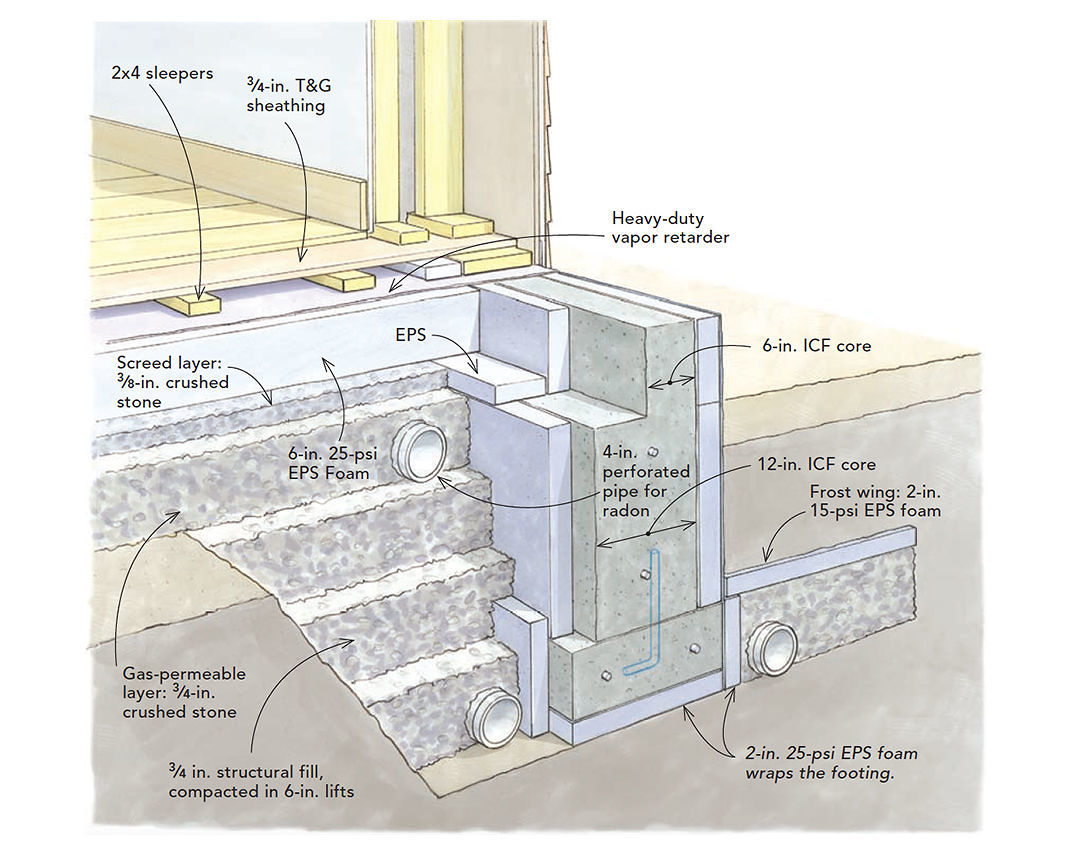

Amazing, both the stem wall and concrete slab are supported by the same thing….the soil. The concrete slab is supported by soil…it is bearing on the soil. The stem wall is supported by a footing that is bearing on the soil. In this approach the stem wall is structurally disconnected from the slab. The easy way to do things is to insulate a stem wall on the inside and thermally decouple the concrete slab from the stem wall. And we will go there…but first the easy stuff. Can we structurally connect stem walls to slabs and not get major thermal bridging without external insulation? Yes. And wait till we talk about termites and rodents and external insulation. This is not necessary…and it results in major thermal bridging unless you insulate them externally. But some folks refuse to believe it and are making folks structurally connect stem walls to slabs. Second, for not good reasons, when we have good soil conditions, it is easy to make stem walls work…structurally. I still think it is a pain in the hind quarters. They are a “bear” to insulate….but it can be done… Note this is a change in my opinion of a couple of years ago where I pretty much said it was not possible to do so practically. You are going to end up with a monolithic slab/grade beam that may also be post tensioned. Other structural engineers hate stem walls…not for good reasons…įirst, for good reasons, when we have bad soil conditions, stem walls are difficult to make work. Some structural engineers hate stem walls…for good reason. The absolute easiest slab-on-grade foundation to insulate is a stem wall….except….when it is not easy…. It is apparently time again to go over what is working and what is not. We were here more than a half decade ago ( BSI-059: Slab Happy, April 2012) and again a couple of years ago ( BSI-096: Hot and Wet But Dry, June 2016).

He lives in Northern California.Concrete slab-on-grade foundations should be easy to insulate…but they are proving not to be easy to insulate. Formerly, he was editor of Tools of the Trade magazine and website.

David Frane is a freelance editor and a good buddy of ours. Learn more about high-performance foundations in the Building America Solutions center. Using aluminum foil to protect the threads on the bolts is a nice touch.

I like how he uses drywall screws instead of duplex nails. Osland does some things that wouldn’t have been done in 1965, like using more rebar and installing the many j-bolts and hold-down bolts required by today’s seismic codes. My house was built in 1965 and I can tell its stem wall foundation was built the same way-with many of the floor joists having first been used for forms.


 0 kommentar(er)
0 kommentar(er)
